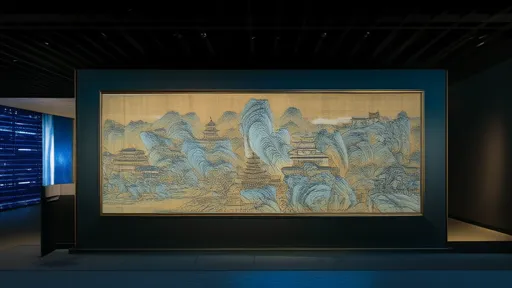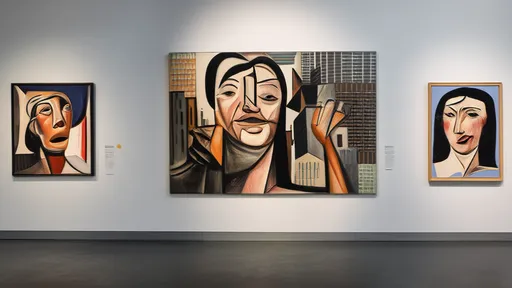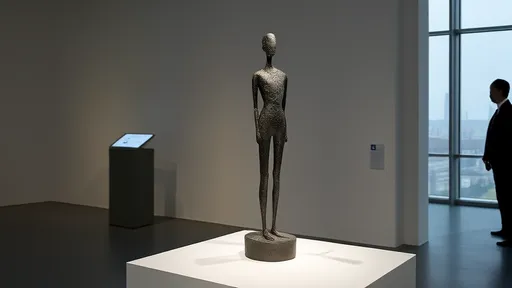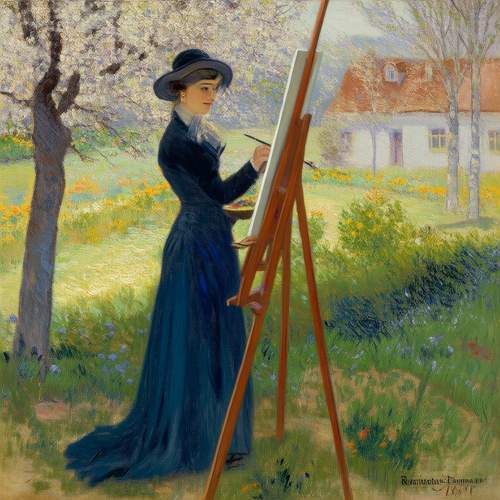In the pantheon of Impressionist art, the name Claude Monet stands tall, celebrated for his masterpieces that capture fleeting moments of light and atmosphere. However, overshadowed by his towering reputation is the work of his stepdaughter and daughter-in-law, Blanche Hoschedé-Monet. A new exhibition and monograph, *Blanche Hoschedé-Monet in the Light*, seeks to restore her rightful place in art history, highlighting not only her impressive body of work but also her significant role as Monet's assistant and companion.
Blanche Hoschedé-Monet's journey into the world of art began at a young age. Born in 1865, she was the daughter of Ernest Hoschedé, a wealthy businessman and connoisseur of avant-garde painting. Her father's home was a hub for prominent artists, including Édouard Manet, Auguste Renoir, and Gustave Caillebotte. It was here, at the age of 11, that she first encountered Claude Monet in 1876. Monet had been commissioned to paint a series of panels for her father's dining room, and this early exposure to the master painter would profoundly influence her artistic development.
Monet's relationship with the Hoschedé family deepened when financial troubles forced Ernest Hoschedé to sell his collection and homes. Monet invited the family to live with him in Vétheuil, northwest of Paris, where Blanche's mother, Alice, and Monet eventually entered into a domestic partnership. This arrangement provided Blanche with the unique opportunity to learn from Monet directly, and she soon began to accompany him on his plein air painting expeditions.
The exhibition *Blanche Hoschedé-Monet in the Light* at The Sidney and Lois Eskenazi Museum of Art in Indiana brings together 40 of her paintings, along with sketchbooks, photographs, and letters. These works reveal an artist of considerable talent, whose style mirrors Monet's yet possesses a distinct character. Her paintings often share the same subjects as Monet's—haystacks, poplars, and scenes along the Seine—but her approach is more direct and solid, focusing on capturing the essence of her subjects rather than the atmospheric effects that Monet favored.
One notable example is her painting *Haystack at Giverny*, which can be compared to Monet's famous *Haystacks* series. While Monet's works are characterized by their ethereal quality and shifting light, Hoschedé-Monet's version is more grounded, emphasizing the structure and form of the haystack. Similarly, her *Poplars at the Water's Edge* and *Morning on the Seine* demonstrate her ability to capture the essence of the landscape with a clarity and directness that sets her apart from her stepfather.
Hoschedé-Monet's work gained recognition during her lifetime, with exhibitions at the Salon des Indépendants in Paris and the Salon de la Société des Artistes Rouennais. Her paintings were sold through leading Parisian dealers, and she received praise from critics. However, her career was interrupted when her husband, Jean Monet, suffered a stroke in 1912. She devoted herself to his care, putting her own artistic pursuits on hold.
After Jean's death in 1914, Blanche returned to Giverny, where she resumed painting and continued to support Monet. Her presence was a source of comfort and inspiration for the aging artist, who was struggling with deteriorating eyesight. Monet's monumental water lily paintings, which he hoped would create "the illusion of an endless whole," were partly made possible by her unwavering support. Although she denied having any hand in his canvases, her role in preparing the canvas grounds and providing emotional support was invaluable.
Following Monet's death in 1926, Blanche remained at Giverny, caring for the house and gardens. She resumed her painting career and held her first solo exhibition at Galerie Bernheim-Jeune in Paris in 1927. Critics hailed her return, with one proclaiming her "more than the heiress of a great name." Despite the shifting tides of the art world, she remained loyal to Impressionism, continuing to paint in the style she had mastered.
Blanche Hoschedé-Monet's legacy extends beyond her paintings. Her dedication to Monet and her contributions to his work have been acknowledged by art historians and critics. René Gimpel, a prominent art dealer, wrote, "Without her, Claude Monet would have lived in an isolation that would have killed him. It was she who kept him alive for us; posterity must not forget her."
The recent exhibition and monograph are significant steps in reclaiming Blanche Hoschedé-Monet's place in art history. While her work remains relatively unknown compared to Monet's, there is a growing appreciation among collectors and institutions. Julia Leveille, head of modern-day auctions at Sotheby's New York, notes that her paintings have achieved strong prices at auction, indicating a rising interest in her art.
Blanche Hoschedé-Monet's story is one of talent, dedication, and resilience. She navigated the challenges of her time, balancing her own artistic ambitions with the demands of family and caregiving. Her paintings, characterized by their clarity and directness, offer a unique perspective within the Impressionist movement. As we celebrate the 150th anniversary of Impressionism, it is essential to recognize the contributions of artists like Blanche Hoschedé-Monet, whose work enriches our understanding of this transformative period in art history.
In the light of renewed attention, Blanche Hoschedé-Monet emerges not just as a comet's tail of Impressionism but as a significant artist in her own right. Her paintings, once overshadowed by Monet's, now stand as testaments to her skill and vision. As we look back on her life and work, we are reminded of the importance of recognizing and celebrating the contributions of all artists, regardless of their relationship to more famous names.

By /Jun 26, 2025

By /Jun 26, 2025

By /Jun 26, 2025

By /Jun 26, 2025

By /Jun 26, 2025

By /Jun 26, 2025

By /Jun 26, 2025

By /Jun 26, 2025

By /Jun 26, 2025

By /Jun 26, 2025

By /Jun 26, 2025

By /Jun 26, 2025

By /Jun 26, 2025

By Emily Johnson/May 21, 2025

By Christopher Harris/May 21, 2025